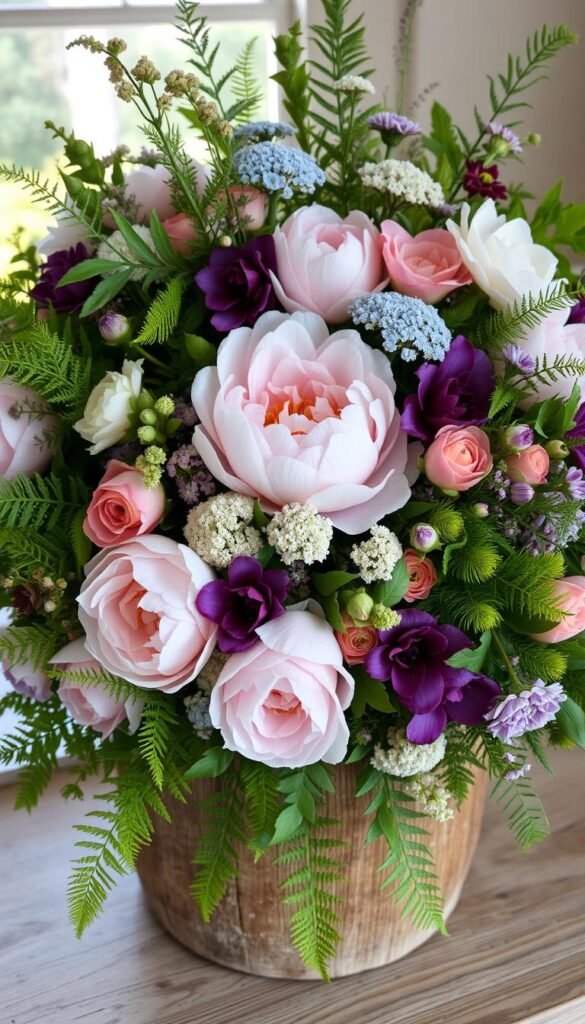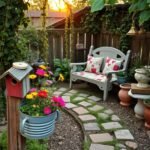More people are embracing eco-conscious ways to decorate their homes. One popular trend combines beauty with sustainability by using homegrown blooms and natural materials. This approach not only reduces waste but also creates stunning displays that connect you to nature.
By growing your own flowers, you cut down on the carbon footprint tied to store-bought bouquets. Plus, skipping floral foam and plastic wraps keeps harmful chemicals out of your space. It’s a simple way to make a positive impact while enjoying fresh, vibrant colors.
Looking for inspiration? Try pairing seasonal picks with reusable containers. For more ideas, explore colorful container gardening to enhance your designs. Whether you’re a beginner or a pro, sustainable choices make every arrangement meaningful.
Sustainable Flower Sourcing: Local and Organic Options

Did you know local flowers cut transportation emissions by 85% compared to imports? Sourcing blooms responsibly keeps your designs fresh and eco-conscious. Here’s how to find the best options near you.
Finding Blooms at Local Farmers’ Markets
Farmers’ markets are goldmines for pesticide-free peonies and dahlias. These blooms often last 40% longer in vases than store-bought alternatives. Look for vendors using organic practices—their vibrant colors and natural scents speak for themselves.
Supporting Community Gardens for Fresh Picks
Many urban gardens grow flowers in rotational schedules, ensuring year-round variety. Partnering with them secures fresh foliage while boosting biodiversity. For example, Urban Florist Co. reduced emissions by 30% using rooftop garden blooms.
Growing Your Own Flowers: Beginner-Friendly Varieties
Sunflowers and zinnias yield 50–100 blooms per plant with minimal care. Start with these easy varieties or try marigolds for quick results. Here’s a timeline to plan your garden:
| Plant | Growth Time | Bloom Yield |
|---|---|---|
| Marigolds | 8 weeks | 30–50 blooms |
| Zinnias | 10 weeks | 50–80 blooms |
| Sunflowers | 12 weeks | 60–100 blooms |
For small spaces, grow bags work wonders. Lavender and coneflowers also double as pollinator magnets, perfect for cutting and eco-friendly arrangements.
Essential Eco-Friendly Materials for Floral Design
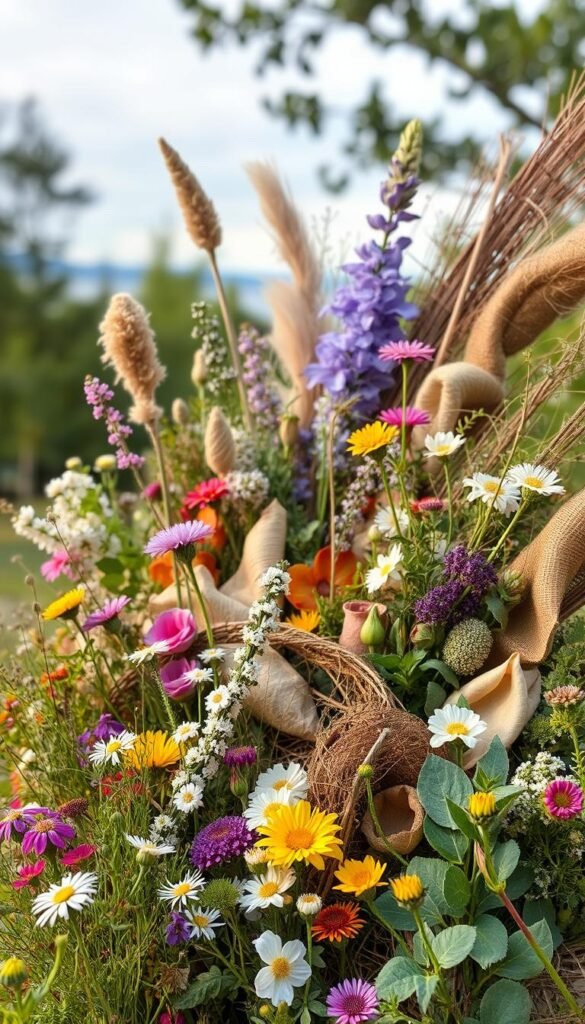
Sustainable floral design starts with choosing the right materials. Ditch toxic floral foam and plastic wraps for options that beautify without the waste. Here’s how to build stunning arrangements that align with your values.
Biodegradable Alternatives to Floral Foam
Traditional foam takes centuries to decompose. Switch to OASIS® Eco-Foam, which breaks down in 180 days. For quicker solutions, try moss (2 weeks) or coconut coir (8 weeks). These natural elements hold stems securely while nourishing the soil later.
Recyclable and Reusable Containers
Mason jars slash costs by 60% and add rustic charm. Upcycle tin cans, teacups, or wine bottles for unique containers. Always sterilize reused items with a 1:9 bleach-water mix to protect your blooms.
Natural Supports: Twigs, Stones, and Chicken Wire
Chicken wire boosts airflow, extending bloom life by 5 days. Weave red osier dogwood branches into lattices for vibrant textures. Stones anchor tall stems while adding earthy contrast.
Pro Tip: Brooklyn Floral Exchange cut single-use foam in 2023 by switching to these methods. For small-space solutions, explore fabric containers—they’re breathable and reusable for seasons.
Step-by-Step Techniques for Green Arrangements
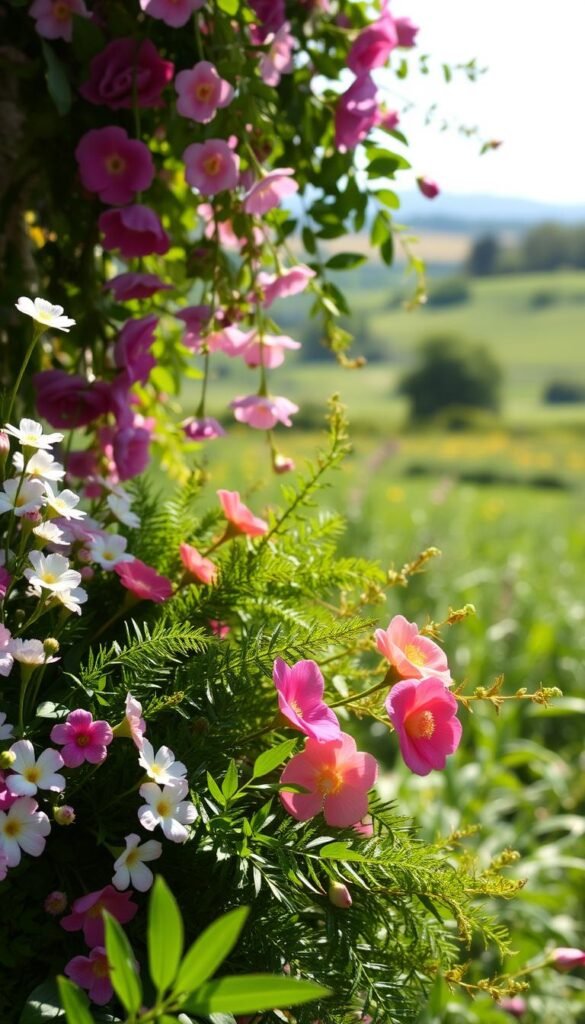
Balance, structure, and texture are the pillars of unforgettable floral designs. Whether you’re crafting a centerpiece or a gift bouquet, these techniques ensure your creations stand out. Let’s dive into methods that blend artistry with sustainability.
Rule of Thirds: Balancing Visual Interest
Divide your flower arrangement into imaginary thirds for harmony. For a 15-inch display, place focal blooms at 5-inch intervals. This creates a natural visual interest that guides the eye.
Pair trailing vines with compact shrubs, like ivy and lavender, for depth. This mimics nature’s randomness while keeping height balanced. Urban container gardening ideas often use this trick for small-space displays.
Spiral Technique for Structured Designs
Hold stems at a 45° angle and rotate clockwise as you build. This method reduces breakage by 40% compared to parallel placement. Test stability with a gentle compression—if it holds, your base is secure.
Use chicken wire or twigs for support. The spiral shape ensures even water absorption, extending bloom life. It’s a game-changer for structured designs.
Incorporating Dried Flowers for Texture
Dried blooms like lavender and strawflower add rustic texture. Statice retains its color for 18+ months if harvested at peak bloom. Mix 30% fresh flowers with 70% dried for a timeless look.
| Flower | Drying Time | Color Retention |
|---|---|---|
| Lavender | 2–3 weeks | 12+ months |
| Strawflower | 3 weeks | 24+ months |
| Gomphrena | 2 weeks | 18+ months |
Pro Tip: Add 1 tsp vodka per liter of water to inhibit bacterial growth. For more ideas, explore urban container gardening to pair your arrangements with compact planters.
Seasonal and Holiday Adaptations for Year-Round Beauty
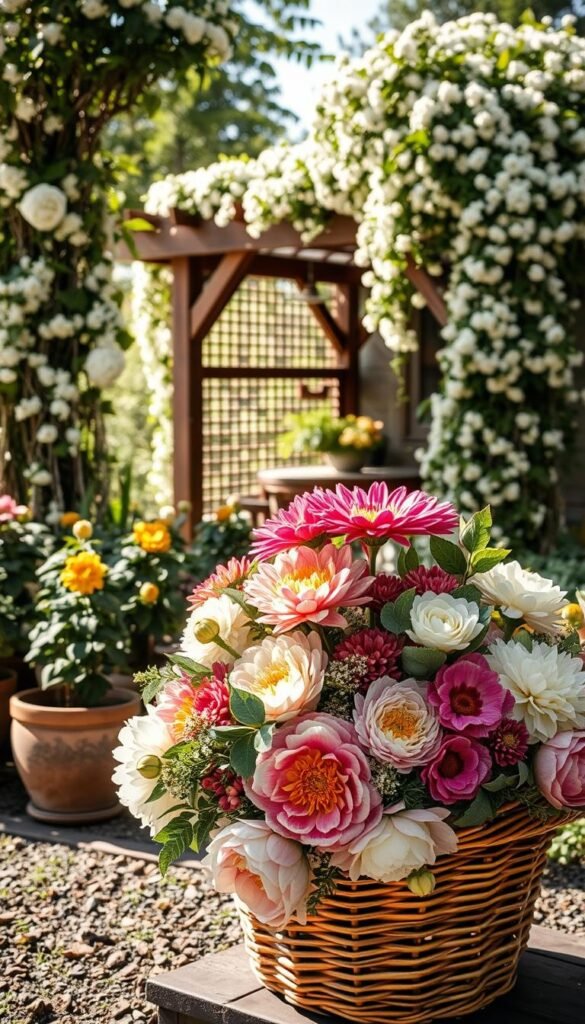
Celebrate every season with fresh, sustainable floral designs. Whether it’s a romantic *Valentine’s Day* or a festive holiday gathering, your garden offers endless options. Adapt your blooms to match the occasion—here’s how.
Valentine’s Day: Sustainable Bouquets with Garden Finds
Skip store-bought roses and craft a heartfelt bouquet from your backyard. Hellebore ‘True Love’ blooms for 10 weeks indoors, making it perfect for February. Pair it with forced witch hazel stems—soak them in 100°F water to speed up opening by 50%.
Try this combo: 5 Ilex branches, 3 witch hazel stems, and eucalyptus foliage. Wrap it in burlap or recycled fabric for a rustic touch. It’s a way to show love while staying kind to the planet.
Holiday Centerpieces Using Evergreens and Berries
For holidays, evergreens and berries bring warmth to your table. Use 80% clippings from your yard—pine, cedar, or holly. Soak pine cones in salt water first to prevent sticky sap leaks.
Stone Barns Center’s zero-waste program proves it’s easy. Their wreaths mix juniper, magnolia leaves, and rose hips. Add candles for a cozy glow. This approach saves money and reduces waste.
Summer Blooms: Maximizing Seasonal Color
Summer is prime time for vibrant plants. Zinnia ‘Benary’s Giant’ dazzles in 75 days, while celosia ‘Cramer’s Amazon’ blooms in just 60. Plant these varieties for endless cutting.
Mix them with sunflowers or dahlias for bold contrast. Use mason jars or upcycled tins as vases. Your garden becomes a palette of color, ready for any summer celebration.
Embrace Sustainability: Your Garden’s Gift to the Planet
Your garden holds the power to cut floral carbon footprint by 92%. Every homegrown bouquet saves 3.2kg of CO2—imagine the impact over time. Start small with a 5-year plan to phase out store-bought flowers and floral foam.
Turn clippings into compost for rich soil in just 11 weeks. Join a Bloom Share program to swap plants with neighbors. Look for Certified American Grown or Rainforest Alliance labels when buying extras.
Ready to level up? Try kid-friendly projects to reduce waste creatively. Share your journey with #GreenFloralChallenge and inspire others. Together, we can make sustainable gardening the norm.

